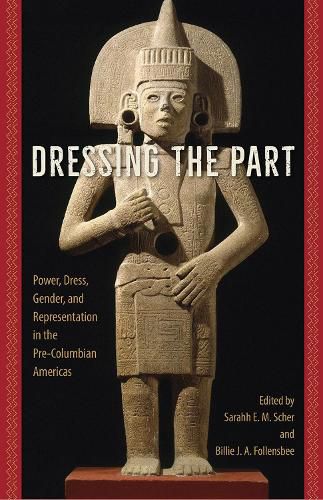Readings Newsletter
Become a Readings Member to make your shopping experience even easier.
Sign in or sign up for free!
You’re not far away from qualifying for FREE standard shipping within Australia
You’ve qualified for FREE standard shipping within Australia
The cart is loading…






This title is printed to order. This book may have been self-published. If so, we cannot guarantee the quality of the content. In the main most books will have gone through the editing process however some may not. We therefore suggest that you be aware of this before ordering this book. If in doubt check either the author or publisher’s details as we are unable to accept any returns unless they are faulty. Please contact us if you have any questions.
From Olmec costume switching to Peruvian bundle burials we see which types of power were gendered, which symbols or motifs were power filled, and how these symbols were borne by the living and the dead. This collection showcases a mature gendered archaeology."--Cheryl Claassen, author of Beliefs and Rituals in Archaic Eastern North America: An Interpretive Guide
Costume can reveal a wealth of information about an individual's identity within society. Dressing the Part looks at the ways individuals in the ancient Americas used clothing, hairstyle, and personal ornaments to express status and power, gender identity, and group affiliations, even from the grave.While most gender studies of pre-Columbian societies focus on women, these essays also foreground men and persons of multiple or ambiguous gender, exploring how these various identities are part of the greater fabric of social relations, political power, and religious authority. The contributors to this volume discuss how costume elements represented empowered identities, how different costumes expressed gender and power, and how elite gendered costume elements may have been appropriated by people of other genders as symbols of power.
Dressing the Part examines how individual identity played a role in larger schemes of social relationship in the ancient Americas. Employing a variety of theories and methodologies from art history, anthropology, ethnography, semiotics, and material science, this volume considers not only how authority is gendered or related to gender but also how the dynamics between power and gender are negotiated through costume.
Contributors: Katie McElfresh Buford; Billie J. A. Follensbee; Alice Beck Kehoe; Melissa K. Logan; Matthew G. Looper; Ann H. Peters; Kim N. Richter; Sarahh E. M. Scher; Elsa L. Tomasto-Cagigao; Laura M. Wingfield; Karon Winzenz; Cherra Wyllie
$9.00 standard shipping within Australia
FREE standard shipping within Australia for orders over $100.00
Express & International shipping calculated at checkout
This title is printed to order. This book may have been self-published. If so, we cannot guarantee the quality of the content. In the main most books will have gone through the editing process however some may not. We therefore suggest that you be aware of this before ordering this book. If in doubt check either the author or publisher’s details as we are unable to accept any returns unless they are faulty. Please contact us if you have any questions.
From Olmec costume switching to Peruvian bundle burials we see which types of power were gendered, which symbols or motifs were power filled, and how these symbols were borne by the living and the dead. This collection showcases a mature gendered archaeology."--Cheryl Claassen, author of Beliefs and Rituals in Archaic Eastern North America: An Interpretive Guide
Costume can reveal a wealth of information about an individual's identity within society. Dressing the Part looks at the ways individuals in the ancient Americas used clothing, hairstyle, and personal ornaments to express status and power, gender identity, and group affiliations, even from the grave.While most gender studies of pre-Columbian societies focus on women, these essays also foreground men and persons of multiple or ambiguous gender, exploring how these various identities are part of the greater fabric of social relations, political power, and religious authority. The contributors to this volume discuss how costume elements represented empowered identities, how different costumes expressed gender and power, and how elite gendered costume elements may have been appropriated by people of other genders as symbols of power.
Dressing the Part examines how individual identity played a role in larger schemes of social relationship in the ancient Americas. Employing a variety of theories and methodologies from art history, anthropology, ethnography, semiotics, and material science, this volume considers not only how authority is gendered or related to gender but also how the dynamics between power and gender are negotiated through costume.
Contributors: Katie McElfresh Buford; Billie J. A. Follensbee; Alice Beck Kehoe; Melissa K. Logan; Matthew G. Looper; Ann H. Peters; Kim N. Richter; Sarahh E. M. Scher; Elsa L. Tomasto-Cagigao; Laura M. Wingfield; Karon Winzenz; Cherra Wyllie